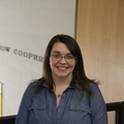Previous studies have found that when bones are exposed to higher rates of strain during loading, they can endure greater strain magnitudes before yield failure. Previously, we evaluated how differences in strain rate might affect load bearing in emydid turtles and ranid frogs, species that use different modes of locomotion. In a continuation of this study, we examined a bufonid frog, the marine toad Bufo marinus, which moves using short hops rather than the long jumps of ranid frogs. Given this difference in locomotor style, we expected strain rates for any given strain greater than those in turtles. Strain rates were collected in vivo from strain gages implanted on the right femur of multiple animals. Raw strain values and high-speed video were collected simultaneously as the animals traveled across a treadmill. Extracted strain rates positively correlated with strain magnitudes in each species. Contrary to expectations, we found that, for any given magnitude measured in bufonids, bufonids had strain rates greater than or equal to ranids but greater than emydids. This may be related to bufonids having shorter limbs than ranids, and thus developing the same magnitude of strain over a truncated time period. These differences in strain rate could contribute to differences in load bearing capacities of limb bones both across and within these lineages.
Available at: http://works.bepress.com/megan_sheffield/5/
